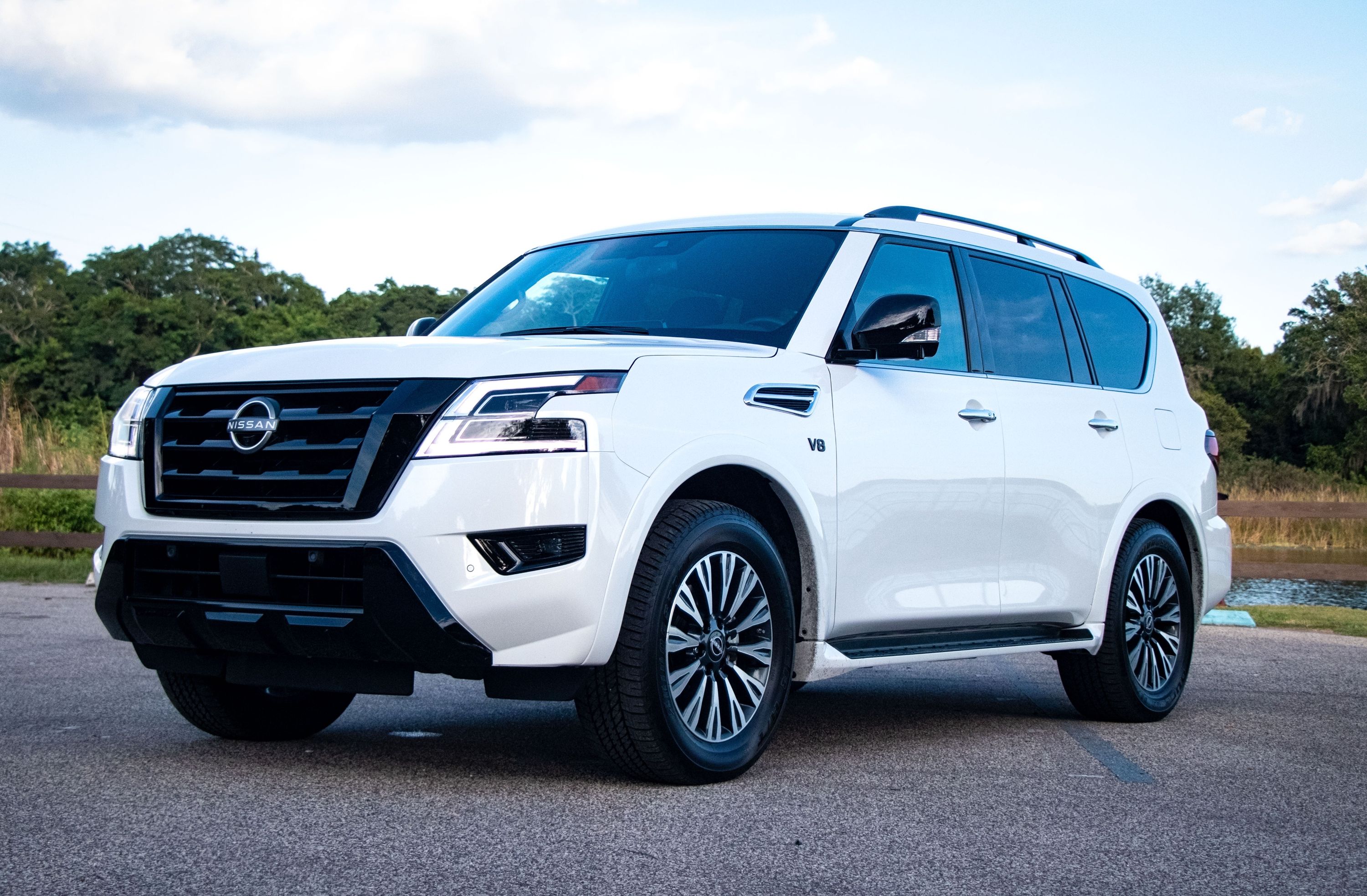
The Nissan Armada full-size SUV returns for the 2023 model year relatively unchanged following a significant refresh inside and out for 2021.
The Japanese automaker has, however, added a few packaging upgrades. Some standard equipment includes a claimed best-in-class 12.3-inch touchscreen infotainment system, wireless Apple CarPlay, wired Android Auto, and optional wireless charging.
The Nissan Safety Shield 360 suite of safety and driver-assist features is standard for all grades. Under the hood lies the naturally aspirated 5.6-liter V8 rated at 400 horsepower and 413 lb-ft of torque. An 8,500-pound maximum towing capacity is standard across the board as well.
Those who want a 4x4 Armada with a two-speed transfer case will have to pay $3,000 over the 4x2 rear-wheel-drive versions. The base S 4x2 carries a starting price tag of $50,400 (an increase of $1,500 from last year), so $53,400 for the S 4x4.
The Armada SV 4x2 begins at $54,950, the SL 4x2 at $58,370, and the top dog Platinum 4x2 at $66,720. None of these prices includes the $1,695 destination fee.
New for 2023 for the SV, SL, and Platinum models is standard Amazon Alexa Built-in. The SV also tacks on standard remote start, LED front fog lights, and an auto-dimming rearview mirror with a universal garage door opener. The SL receives a heated steering wheel at no extra cost.
The Armada is part of a dying breed of big, gasoline-powered SUVs that ride on a body-on-frame architecture. The likes of the Chevrolet Tahoe and Ford Expedition are considered its main rivals. Earlier this year, there was a rumor that the next Armada would drop the NA V8 in favor of a variation of Nissan's existing twin-turbo V6 gasoline engine.
This would make sense for one key reason: fuel economy. The current V8 is a gas guzzler with a 13/18/15 mpg city/highway/combined EPA-estimated rating.
Another rumor suggests Nissan may discontinue its full-size utility vehicle lineup altogether because the current Titan pickup truck is not expected to be replaced with a successor once its lifecycle concludes.
If that's the case, Nissan will have to either utilize the Armada's existing platform and update it accordingly or develop a new one from scratch, something we don't see happening for various factors, namely cost and Nissan's push into the EV market.
